Botany : Chromosomal Basis of Inheritance - Linkage | 12th Botany : Chapter 3 : Chromosomal Basis of Inheritance
Chapter: 12th Botany : Chapter 3 : Chromosomal Basis of Inheritance
Linkage
Linkage
The genes which
determine the character of an individual are carried by the chromosomes. The
genes for different characters may be present either in the same chromosome or
in different chromosomes. When the genes are present in different chromosomes,
they assort independently according to Mendel’s Law of Independent Assortment.
Biologists came across certain genetic characteristics that did not assort out
independently in other organisms after Mendel’s work. One such case was
reported in Sweet pea (Lathyrus odoratus) by Willium
Bateson and Reginald C. Punnet in 1906. They
crossed one homozygous strain of sweet peas having purple flowers
and long pollen grains with another homozygous strain having
red flowers and round pollen grains. All the F1
progenies had purple flower and long pollen grains indicating purple flower
long pollen (PL/ PL) was dominant over red flower round pollen
(pl/pl). When they crossed the F1 with double recessive
parent (test cross) in results, F2 progenies did not exhibit in
1:1:1:1 ratio as expected with independent assortment. A greater number of F2
plants had purple flowers and long pollen or red flowers and round pollen. So
they concluded that genes for purple colour and long pollen grain and the genes
for red colour and round pollen grain were found close together in the same
homologous pair of chromosomes. These genes do not allow themselves to be
separated. So they do not assort independently. This type of tendency of genes
to stay together during separation of chromosomes is called Linkage.
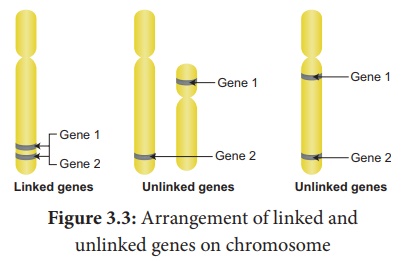
Genes located close
together on the same chromosome and inherited together are called linked
genes. But the two genes that are sufficiently far apart on the same
chromosome are called unlinked genes or syntenic genes (Figure 3.3).
Such condition is known as synteny. It is to be differentiated by the
value of recombination frequency. If the recombination frequency value is more
than 50 % the two genes show unlinked. when the recombination frequency value
is less than 50 %, they show linked. Closely located genes show strong linkage,
while genes widely located show weak linkages.
1. Coupling and Repulsion theory
The two dominant alleles
or recessive alleles occur in the same homologous chromosomes, tend to inherit
together into same gamete are called coupling or cis configuration
(Figure: 3.5 ). If dominant or recessive alleles are present on two different,
but homologous chromosomes they inherit apart into different gamete are called repulsion
or trans configuration (Figure: 3. 6).
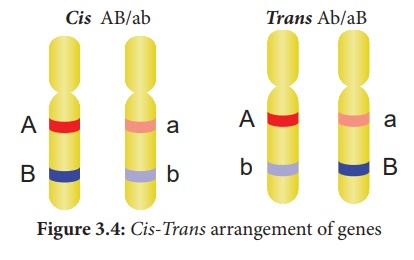
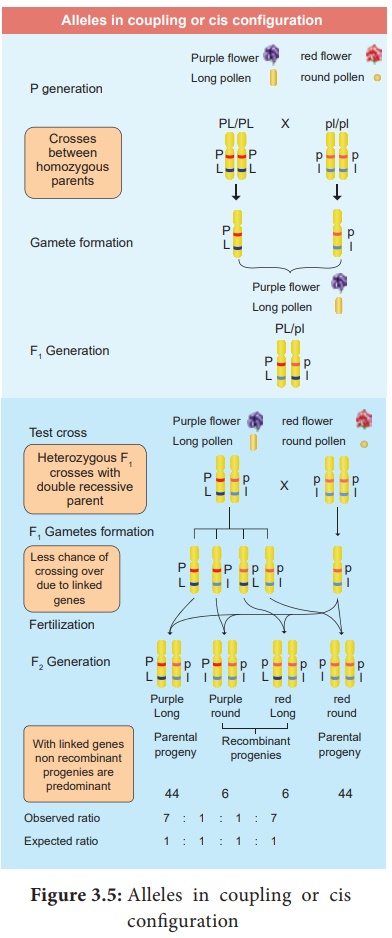
2. Kinds of Linkage
T.H. Morgan found two types of linkage.
They are complete linkage and incomplete linkage depending upon the
absence or presence of new combination of linked genes.
Complete Linkage
If the chances of
separation of two linked genes are not possible those genes always remain
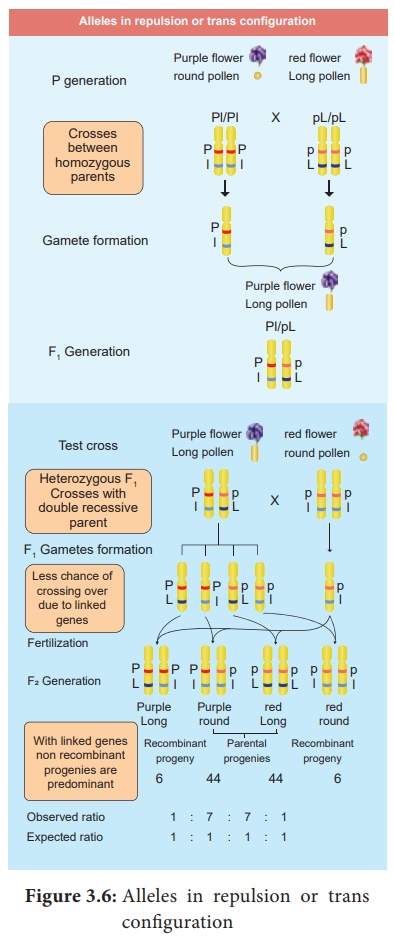
The linked genes are located very
close together on the same chromosome such genes do not exhibit crossing over.
This phenomenon is called complete linkage. It is rare but has been
reported in male Drosophila (Figure 3.7). C.B Bridges
(1919) discovered that crossing over is completely absent in some species of
male Drosophila.
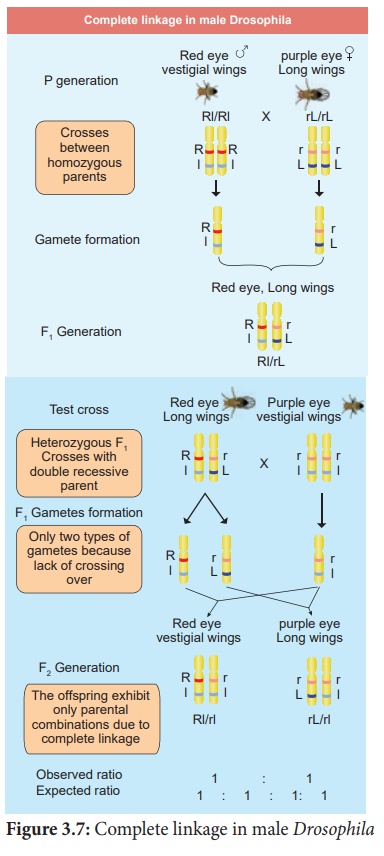
Incomplete Linkage
If two linked genes are
sufficiently apart, the chances of their separation are possible. As a result,
parental and non-parental combinations are observed. The linked genes exhibit
some crossing over. This phenomenon is called incomplete linkage. This
was observed in maize. (Figure 3.8) It was reported by Hutchinson.
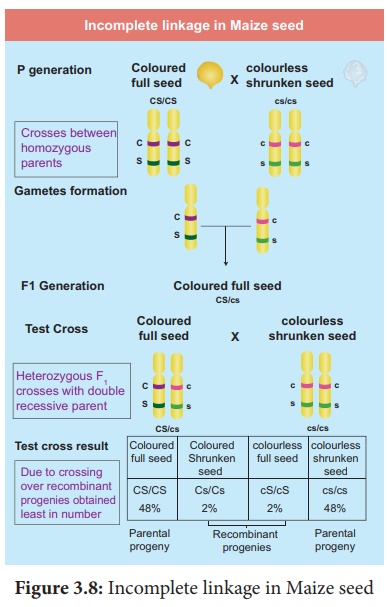
3. Linkage Groups
The groups of linearly
arranged linked genes on a chromosome are called Linkage groups. In any
species the number of linkage groups corresponds to the number haploid set of
chromosomes. Example:
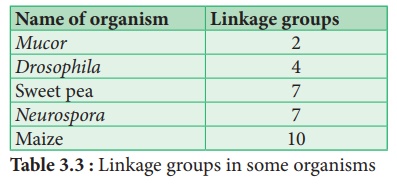
Linkage and crossing
over are two processes that have opposite effects. Linkage keeps particular
genes together but crossing over mixes them. The differences are given below.
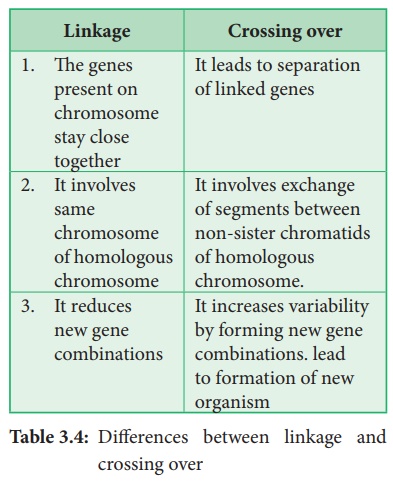
Related Topics